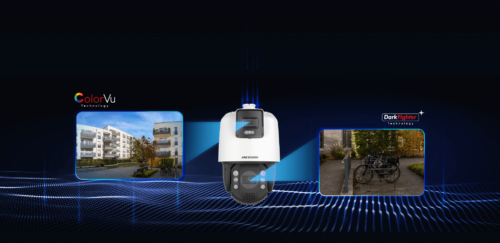The advanced technology helps monitor large areas with fewer cameras by showing wide and close-up views, saving costs and avoiding blind spots.

End-users must often monitor large areas like traffic intersections, warehouses, or parking lots. Achieving a wide field of view usually requires multiple cameras and extensive cabling, which increases costs, installation time, and maintenance. Hikvision has developed a “See Vaster” technology that addresses this issue by integrating two or more lenses into a single camera. This allows one multi-lens camera to replace several conventional cameras, providing both panoramic and zoomed-in views of the site simultaneously.
The See Vaster technology provides monitoring solutions by combining designs like TandemVu and PanoVu. TandemVu integrates multiple lenses into a single unit, simultaneously delivering a wide view and detailed close-ups. PanoVu uses a fisheye lens or multiple lenses and sensors to produce 360° or 180° panoramas with clear visual information, ensuring wide coverage.
TandemVu technology combines multiple lenses into one unit to provide an overview and detailed close-ups. Static cameras cover fixed scenes with limited fields of view, often missing activity at the edges. PTZ cameras can also create blind spots when panning, tilting, or zooming in on moving objects. TandemVu solves these issues by offering two video channels that work together.
The upper lens provides a panoramic view of the monitored area, while the lower lens can pan, tilt, and zoom in on specific details. This dual-lens design ensures users maintain both opinions and reduces costs associated with buying, installing, and maintaining separate cameras. Users also manage only one IP address and require one video management software license.
TandemVu cameras let users monitor an entire area while focusing on specific incidents without blind spots. The two video channels work together using Smart Linkage, where the panoramic lens detects objects and signals the PTZ lens to track them automatically. This process helps users focus on important events. The technology provides complete area monitoring and zoomed-in views of specific incidents without creating blind spots. It offers AI features like perimeter protection, facial recognition, ANPR, and traffic violation detection.








